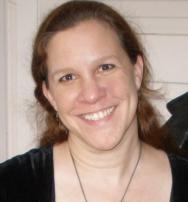Quirky athletic movements, often restricted to certain parts of the world or cities by the limits of geography, now have the benefit of global social media channels, allowing them to spread like wildfire. Once termed “the sport of nerds,” parkour, or urban obstacle course athletics, is now catching on globally thanks to smart phone cams and YouTube. The movement has its origins in French military training in Vietnam, and it has been something of a subculture since the 1980s. Its practitioners move through primarily city landscapes, running, climbing, swinging, vaulting, jumping, rolling and crab-walking. It has been described as a way to get from Point A to Point B “in the most efficient way possible,” even if it means vaulting over a fence or sliding down a staircase. It’s also sometimes referred to as “the art of forward movement.” Needless to say, most of its practitioners, who call themselves “traceurs,” tend to be young.
Rising interest in parkour – not only its movements but its mind-body and community philosophy -- is giving way to competitions, group activities, official events called “jams” and even official teams. Some athletic organizations are even offering classes to help would-be adherents.
This fall, Discovery Programs on New York’s Upper West commenced a parkour class for nine kids at its West 100th Street facility. Children are taught agility while they dangle from monkey bars, tumble across mats and move quickly over balance beams, according to the Web site DNAInfo. The point, which the kids are mastering, is to move as quickly as possible without touching the ground. The Discovery Program’s class – the only one of its kind in New York City for young kids -- has proved so popular that the facility is implementing two more classes for this winter. The facility uses gym equipment to simulate a cityscape environment and teaches children how to navigate the moves safely.
The New York Parkour Academy offers adults and young people 15 and over classes. The group’s current fall schedule is underway, and classes are offered at the East River Park Amphitheater at 478 Cherry Street in New York City.
Elsewhere in the U.S., North Carolina has become something of a hotspot for parkour, according to a recent profile in the Connecticut newspaper the Republican American. There are active parkour communities at North Carolina State University and at the University of North Carolina in Charlotte. The state also recently hosted two statewide “parkour jams,” which attracted about 80 practitioners.
The American parkour community believes that jams and events are part of the soul of the sport, which emphasizes community. In early December, New Orleans and Baton Rouge, Louisiana will host the third annual National Parkour Jam, a three-day event that will feature courses, workshops and competitions.
There are few official facilities for parkour, as the point behind it is to interact naturally with an urban environment. A few cities have posted warnings against practicing parkour in certain areas, concerned about property damage and liability in case of injuries. It seems unlikely, however, that these rules would be enforceable.

